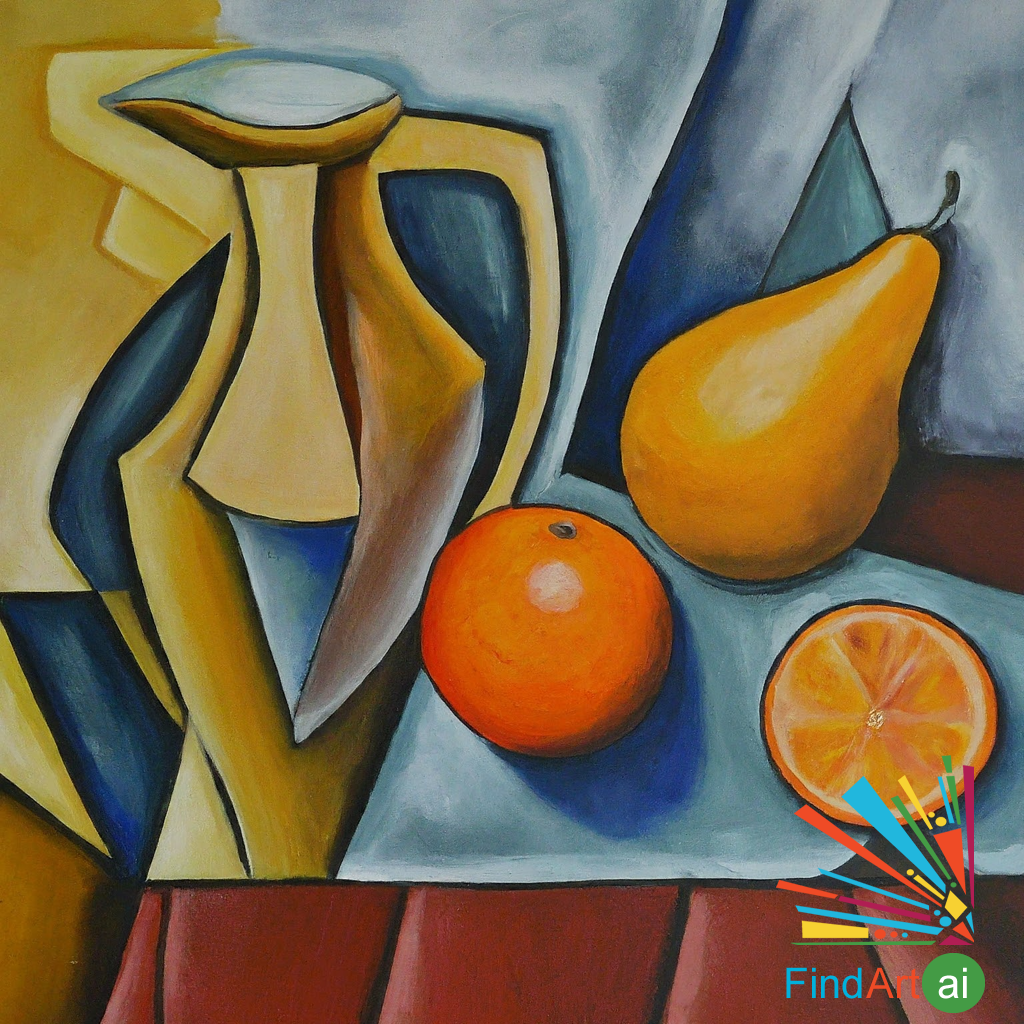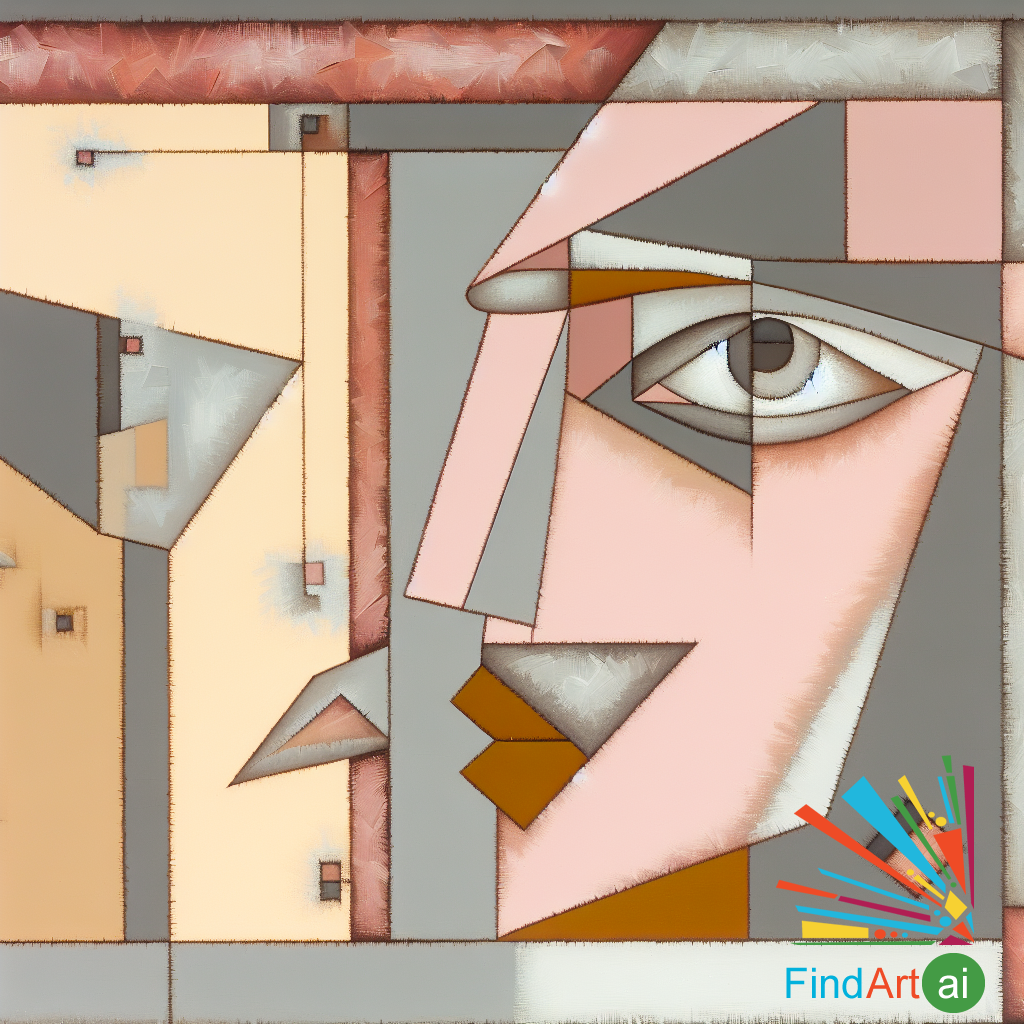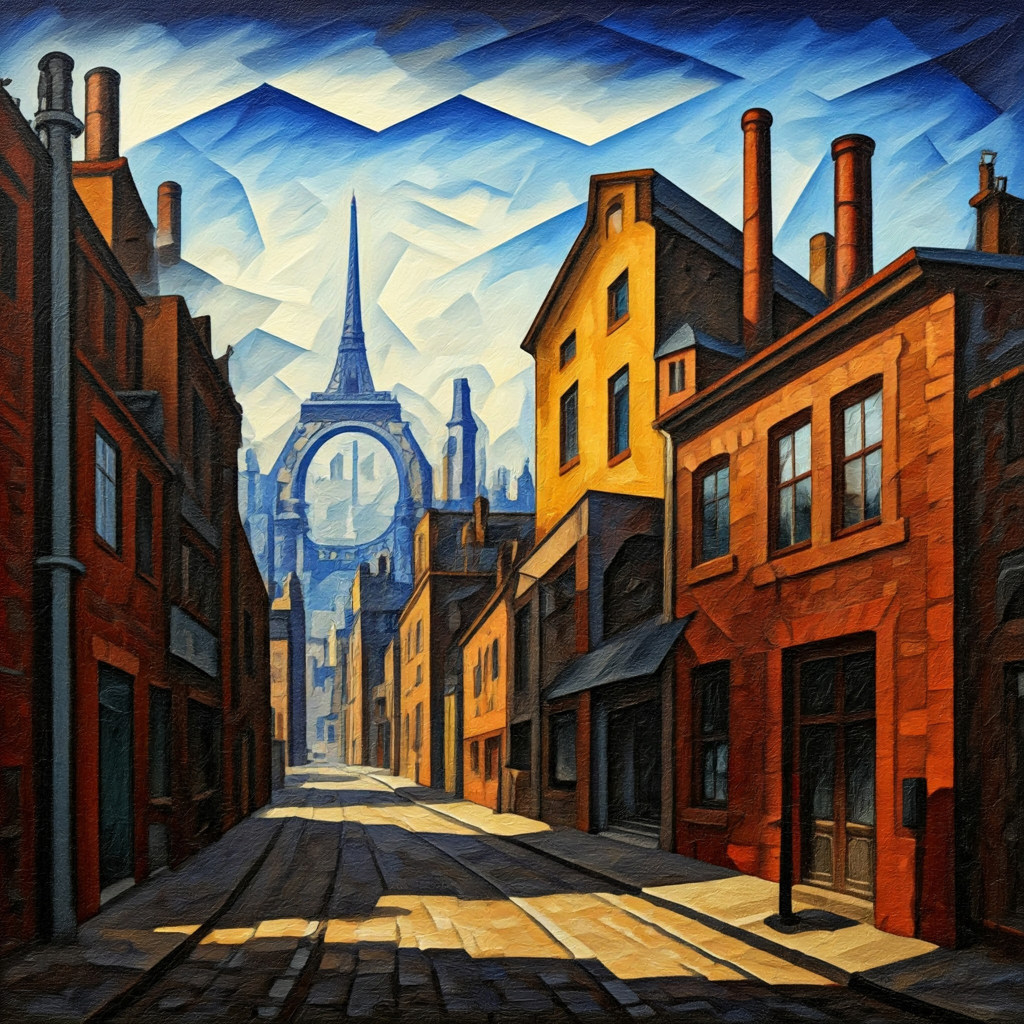Cubism
Cubism is a revolutionary painting style that emerged in the early 20th century, pioneered by Pablo Picasso and Georges Braque. It is characterized by the breaking down of objects into geometric shapes and presenting multiple perspectives simultaneously. Instead of depicting subjects from a single viewpoint, Cubism deconstructs them and reassembles them in an abstracted, fragmented form. This style challenged traditional notions of perspective, space, and form, marking a major shift in modern art.
Key Characteristics of Cubism
- Geometric Fragmentation
- Cubism deconstructs objects into geometric shapes like cubes, spheres, and cones. The forms are simplified, flattened, and fragmented, creating an abstract representation that differs from naturalistic depictions.
- Example: Pablo Picasso’s Les Demoiselles d'Avignon, one of the first major works of Cubism, shows figures broken into angular planes and sharp edges.
- Multiple Perspectives
- One of the most distinctive features of Cubism is its depiction of multiple viewpoints at the same time. Instead of portraying an object from a single perspective, Cubist artists show different sides and angles simultaneously, creating a more complex and dynamic representation.
- Example: Georges Braque’s Violin and Candlestick, where the subject is viewed from different angles within a single painting, giving a sense of fragmented reality.
- Flattening of Space
- Cubism abandons the use of traditional depth and perspective. Instead of creating the illusion of three-dimensional space, Cubist paintings often flatten the space, reducing depth and making background and foreground elements appear on the same plane.
- Example: Juan Gris’s Still Life with Flowers, where objects are depicted without traditional depth, emphasizing surface and shape rather than realistic space.
- Abstracted Forms
- Although Cubist works often depict recognizable subjects, such as people, still lifes, or landscapes, the forms are abstracted to the point of being almost unrecognizable. The focus is on the structure and shape rather than the subject’s realistic appearance.
- Example: Fernand Léger’s The City, where abstracted, mechanical forms convey the energy and dynamism of urban life.
- Monochromatic and Muted Color Palettes (Analytic Cubism)
- In the early phase of Cubism, known as Analytic Cubism, artists used a limited color palette of earthy tones, such as browns, grays, and greens. This allowed them to focus on form, structure, and spatial relationships rather than being distracted by color.
- Example: Georges Braque’s Houses at l'Estaque, which uses a subdued palette to emphasize the geometric shapes and fragmented forms.
- Collage and Mixed Media (Synthetic Cubism)
- Later Cubism, known as Synthetic Cubism, introduced collage elements and mixed media into painting. Artists began incorporating newspaper clippings, fabric, and other materials into their work, creating a more textured and layered composition.
- Example: Pablo Picasso’s Still Life with Chair Caning, where Picasso used actual rope and oilcloth to create a collage that combines painted and real elements, blurring the line between painting and sculpture.
- Focus on Structure and Composition
- Rather than focusing on details or narrative, Cubist artists emphasized the structure and composition of the painting. The way forms and planes are arranged on the canvas became the central concern, creating a sense of order and complexity in the abstracted forms.
- Example: Juan Gris’s Portrait of Picasso, where geometric shapes and a structured composition create a stylized, abstracted portrait.
Common Themes in Cubism
- Still Life Cubist artists frequently painted still lifes, using everyday objects like musical instruments, bottles, and fruit to explore the fragmentation of form and space.
- Portraiture Although highly abstracted, portraits were a recurring theme, often depicted through geometric shapes and multiple viewpoints.
- Urban Landscapes Cubism also explored the modern city and its architectural structures, focusing on the dynamic, fragmented nature of urban life.
Famous Cubist Artists and Works
- Pablo Picasso
- One of the founders of Cubism, Picasso’s works like Les Demoiselles d'Avignon and Guernica are iconic examples of how Cubism deconstructs form and represents multiple perspectives.
- Georges Braque
- Co-founder of Cubism alongside Picasso, Braque’s works such as Violin and Palette exemplify the early, Analytic phase of Cubism, with fragmented forms and muted color palettes.
- Juan Gris
- A later Cubist artist, Gris is known for his Synthetic Cubism works, such as The Sunblind, which incorporate collage and a more vibrant use of color.
- Fernand Léger
- Léger’s works, such as The City and Woman with a Book, represent a more abstract, mechanized version of Cubism, reflecting the influence of industrialization and modern life.
- Robert Delaunay
- Delaunay developed a form of Cubism known as Orphism, which used bright, vibrant colors and focused on the use of light and movement, as seen in his work Simultaneous Windows.
Phases of Cubism
- Analytic Cubism
- The earlier phase of Cubism (1908–1912), characterized by fragmented forms, multiple viewpoints, and a limited color palette. The focus was on deconstructing objects into geometric shapes and reassembling them in a flattened space.
- Example: Georges Braque’s The Portuguese.
- Synthetic Cubism
- The later phase (1912 onward) introduced brighter colors, simpler shapes, and collage techniques. This phase moved away from the extreme fragmentation of objects and focused more on building compositions with various materials.
- Example: Pablo Picasso’s Guitar series, which includes both painted elements and mixed media like paper and string.
Cubism painting style revolutionized the way artists represented reality by breaking down objects into geometric forms and depicting multiple perspectives simultaneously. With its focus on structure, fragmentation, and abstraction, Cubism challenged traditional notions of space, depth, and representation. The movement evolved through Analytic Cubism, which emphasized deconstruction and muted colors, to Synthetic Cubism, which embraced collage, mixed media, and brighter colors. Through Cubism, artists like Picasso, Braque, and Gris fundamentally changed the course of modern art, influencing subsequent movements and reshaping the boundaries of visual expression.
Cubism Paintings with Still Life Theme
Cubist still life paintings challenge the traditional representation of objects by deconstructing an...
Cubism Paintings with Portraiture Theme
Cubist portraiture transforms traditional representations of the human figure by dissecting and reas...
Cubism Paintings with Urban Landscapes Theme
Cubist urban landscapes reinterpret the city through fragmented perspectives and geometric abstracti...



